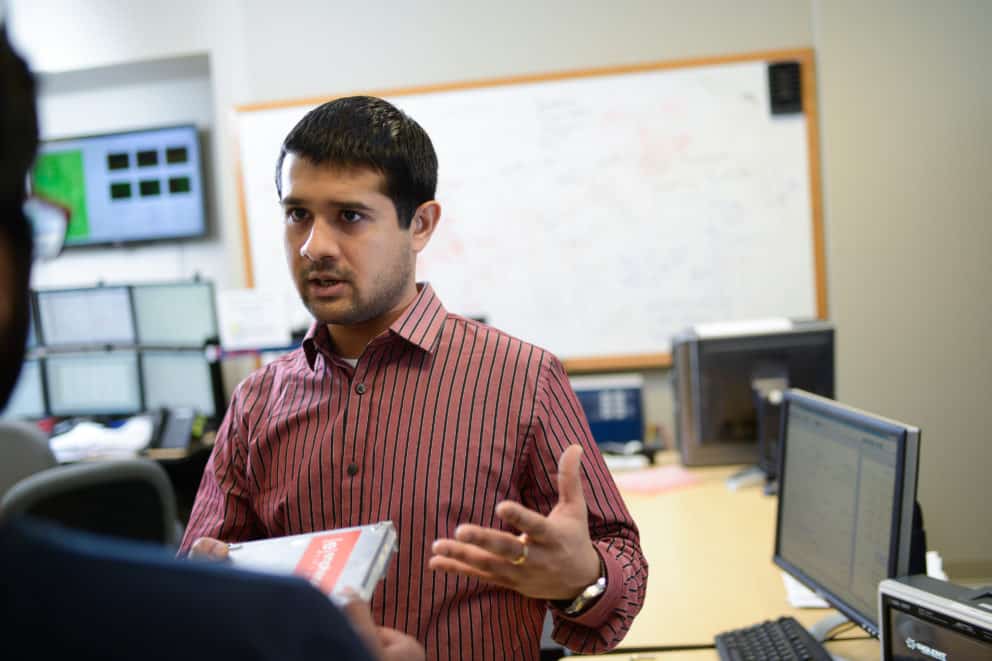
Aranya Chakrabortty, Ph.D., a FREEDM researcher and NC State faculty in Electrical and Computer Engineering, spent nine weeks this summer at the Army Research Laboratory (ARL) in Adelphi, Maryland conducting research on big data. ARL does basic and applied research in computational sciences, materials, propulsion, ballistics, protection, and human factors. ARL maximizes their research funding by encouraging collaboration between in-house experts and academic and industry partners.
“My research at ARL involved applying machine learning to develop control algorithms that account for situational uncertainty,” says Chakrabortty. “Specifically, I helped analyze battlefield situations involving drone swarms.”
Control systems are all around us. In fact, the human body has multiple control systems: you reach for a mug and your eyes show you the handle to grab, or you get hot in the sun and start sweating to cool off. Similar processes and feedback occur in myriad other ways in today’s world. You push the accelerator or the brake in your car. The thermostat in your house controls heating or cooling. You get on an elevator and push the button for your floor. The goal of each system is stability around a setpoint, e.g, temperature, speed, location, etc.
Modern control systems strive to be robust and adaptive. “A robust control system maintains stability across a wide range of conditions but is often very conservative,” says Chakrabortty. “An adaptive controller can also maintain stability but adjusts its parameters as the system itself changes. That makes it more enterprising.”
But what happens when the system involves hundreds or thousands of independent agents that all react to system conditions that are poorly defined or change rapidly? The control algorithm must handle massive amounts of data, process it quickly, and learn as it operates. One method to solve these problems is to dynamically cluster agents into groups based upon their behavior (the technical term is dimensionality reduction), use machine learning to learn that group behavior, and then apply adaptive control to each cluster.
Dr. Chakrabortty’s fundamental work in controls is applicable to research at the FREEDM Systems Center. For example, electric utilities must maintain stable voltage and frequency across their grids in order to keep the power flowing. Grid control was relatively simple when utilities managed a few, very large generators. Today’s grid includes distributed generation (solar, wind, batteries) and requires greater optimization. As additional sensors are located on the grid to improve control, the amount of data grows exponentially and requires a machine learning solution.
“I think this is a great time to merge ideas from machine learning and control theory, and vice versa. For my future work, I would like to work on integrating these two fields, especially for control of very large complex networks such as the power grid,” Chakrabortty said.
